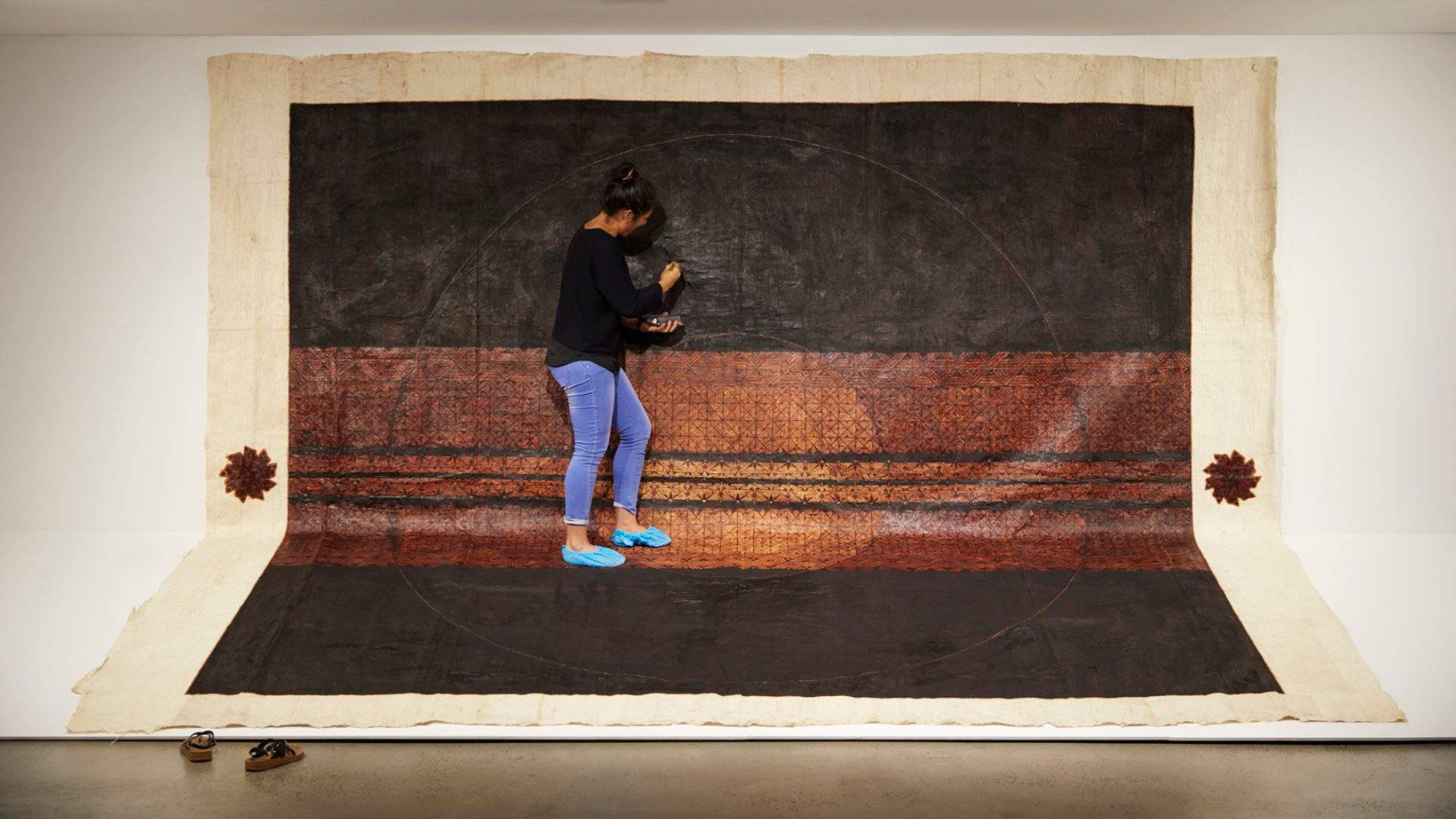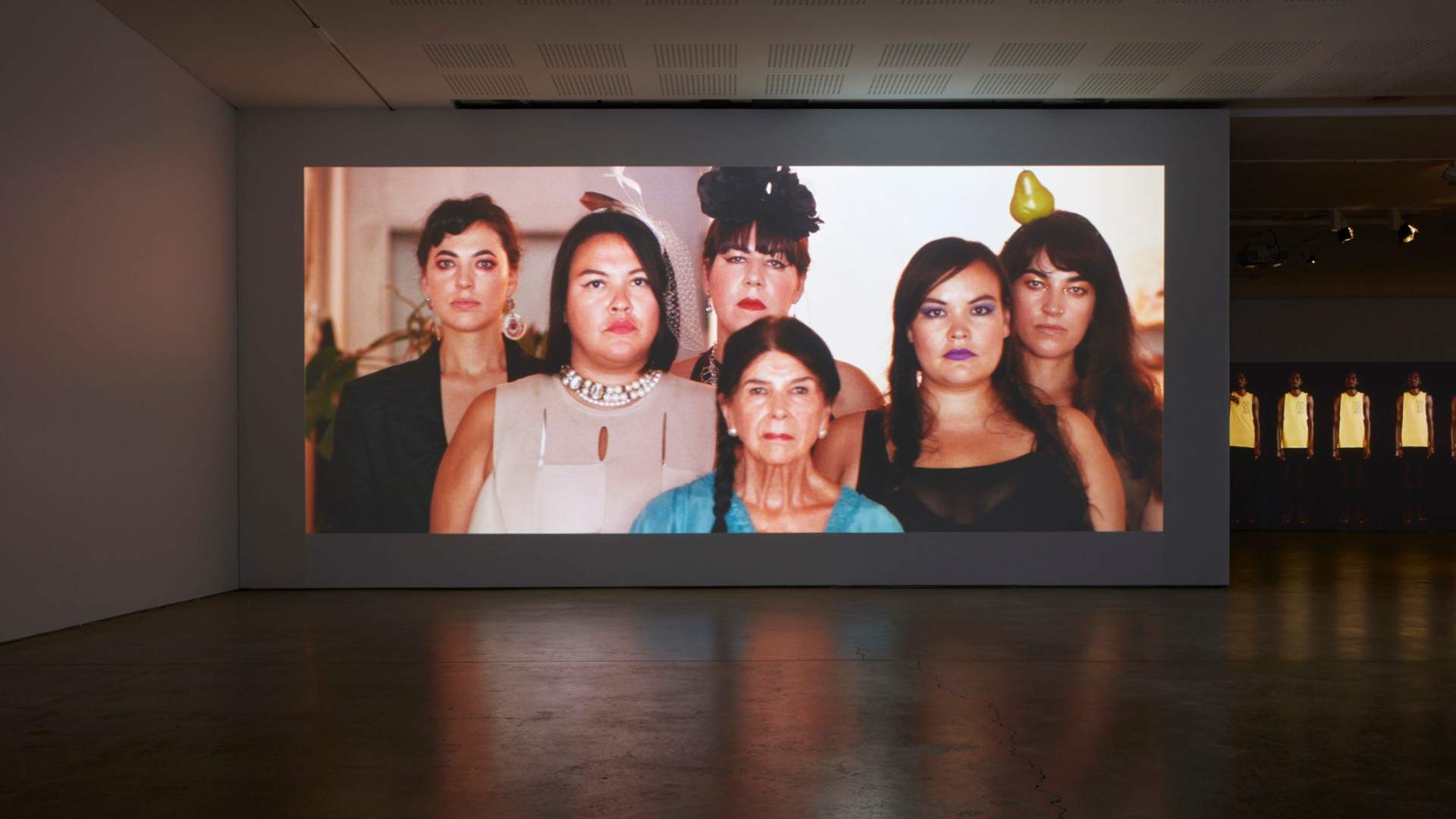Wansolwara: One Salt Water
A multi-location exhibition explores the languages, traditions and histories of people connected by one ocean.
Overview
Wansolwara is a pidgin word from the Solomon Islands meaning 'one salt water' — its message is a shared bond between those who live in the Pacific, or the Great Ocean.
That bond is what connects more than 20 contemporary artists, whose works — from Polaroid pictures to bark cloth tapestries — can be experienced at multiple galleries in Sydney until April.
At UNSW Galleries, in Paddington, you'll find a collection of works within the exhibition called O le ūa na fua mai Manuʻa (a Sāmoan proverb that describes incoming rain) presented by Sāmoan artist, researcher and curator Léuli Eshrāghi. The ground-level exhibit features two video works by artist Amrita Hepi, an award-winning First Nations choreographer and dancer from Bundjulung and Ngāpuhi communities.
"As a child I had always thought that if my body could speak for me it meant I wouldn't have to talk," says Hepi, who describes her videos as "love letters to long-time collaborators". A dancer on the white cliffs of Clovelly is mesmerising to watch, and a former Bangarra dancer bathed in purple light the former Sydney nightclub Goodgod Small Club, is equally captivating.
Upstairs, you'll find two large-scale bark cloth tapestries — called ngatu — created by Brisbane-based Tongan artist Ruha Fifita. Intended as family heirlooms, the works are the result of her family's handiwork over long nights with food and music to fuel a manually demanding tradition.
"Our family is not all Tongan, but we share love and communication, so it was about how we honour everyone and make it inclusive," says Fifita.
The second ngatu was created in the Pacific Islands Year of the Whale in 2016, and Fifita tells us she created it to advocate for the surrounding waters of New Caledonia to become an ocean sanctuary.
In the far gallery, Fiji-born and Sydney-based artist Shivanjani Lal is using her works to highlight the indentured labour diaspora of the Indian and Pacific Oceans. In Beta, ek story bathao, there's a series of 'Australian Hemisphere' maps that repeat around the room.
Into each map, Lal has sewn red thread (two shades) to carefully track the movement of ships in the years 1879–1920. The ships transported both free and indentured labour passengers from India to Fiji. Some of those labourers would have toiled in sugarcane fields for Australia's Colonial Sugar Refining (CSR) company. A history which Lal is coming to terms with herself as her family operated a sugarcane field.
"This year marks the centenary of the end of indentured labour," says Lal. "Over 60,000 men and women were removed from India to Fiji; people signed an agreement but really it was slavery."
Though Lal, Fifita and Hepi's works tell distinct and personal stories, all of the works in the exhibition are connected by a sense of shared modes of expression, traumatic histories and continued cultural practices. Other artists featured include Sebastián Calfuqueo Aliste, a multidisciplinary artist of Mapuche heritage; Canadian video artist Caroline Monnet; and emerging Indigenous artist Gutiŋarra Yunupiŋu, among many others.
Once you've explored UNSW Galleries, check out more of Wansolwara: One Salt Water at Haymarket's 4A Centre for Contemporary Art (running for a slightly shorter period from January 17–March 29).
Images: 1. Amrita Hepi: 'A Body of Work (At The End Of The Earth) (Waangenga Blanco)', 2017. 2. Shivanjani Lal: 'Beta, ek story bathao' 2019. 3. Ruha Fifita: artist and installation in progress, 'Lototō 1', 2016. 4. Shivanjani Lal: 'Yaad Karo (1879–1920)', 2019. 5. Ruha Fifita and the family of Akesa and Iseleli Fifita: 'Koe Ngoue Manongi', 2019. 6. Caroline Monnet: 'Creatura Dada', 2016 and Gutiŋarra Yunupiŋu: 'Garrutu'mi Mala (My Connections)', 2019. UNSW Galleries. Photography: Zan Wimberley.










